| All along this coast are mission churches built in the 1700s by
the Spanish missionaries who came up from Mexico towards San
Francisco. The whole area was owned by Mexico until 1848. This is one of the
largest at the town of Santa Barbara and was founded by the Franciscans in
1786. The first buildings were destroyed by earthquakes and the present
buildings were built in 1820-70. It was badly damaged again in 1925 and has
had more restoration work since. | 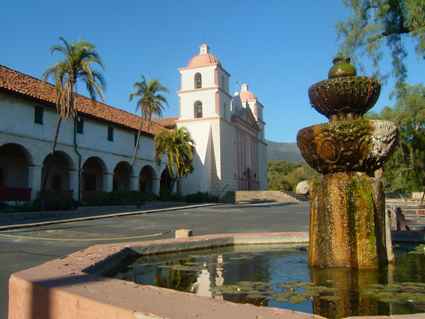 |
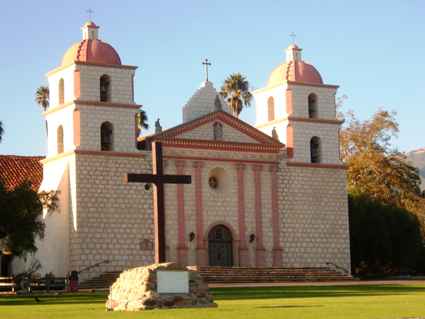 | The buildings are
quite imposing even today and would have been major centres when they were
first built, mostly with local labour. Many of the design details are a blend
of Spanish and local ideas and craftsmanship from the Chumash Indians. |
| It is a much simpler style than many of the grand European
churches but in many ways seems more fitting to their role and time. | 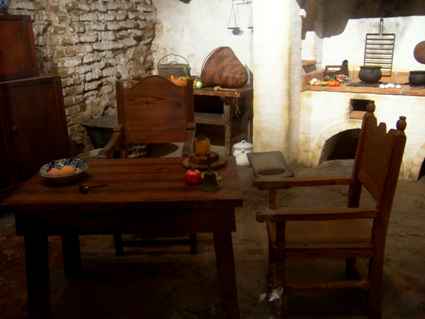 |
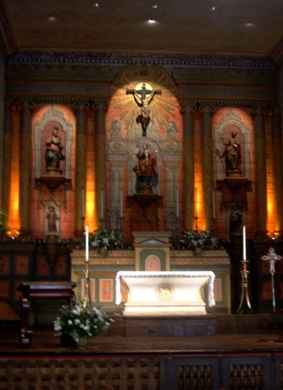 | The altar is
impressive but much simpler than in the later churches. Some of the parts
were imported from Spain but much was locally crafted. |
| The style owes a lot to Mexican architecture which makes them fit
well with their environment. The inner courtyard gardens were very calm and
peaceful. | 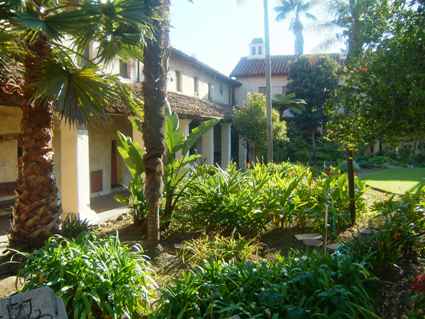 |
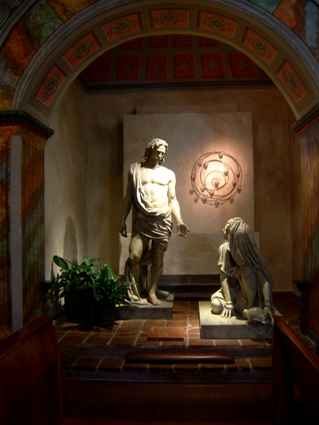 | The church has some
fine pieces of sculpture thoughtfully laid out. |
| The carved monks on either side of this altar were quite a
feature of this alcove. | 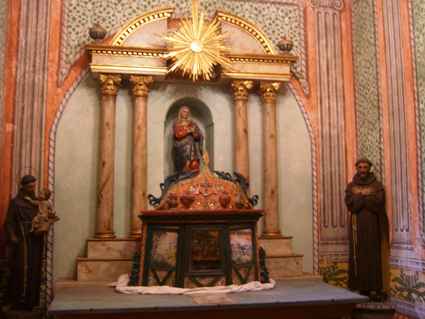 |
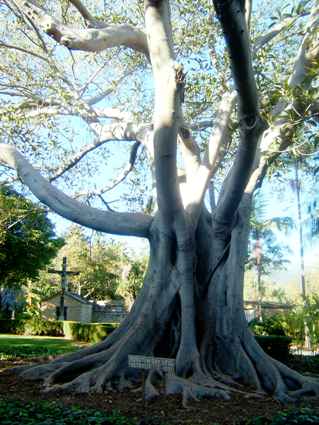 | Outside is a
venerable fig tree dating back to the origins of the mission. It forms the centrepiece of the enclosed graveyard. |
| The Mission is within sight of the ocean but I suspect that the
houses surrounding the green opposite the Mission are some of the most
sought after real estate in the region. | 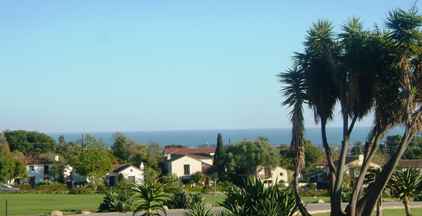 |
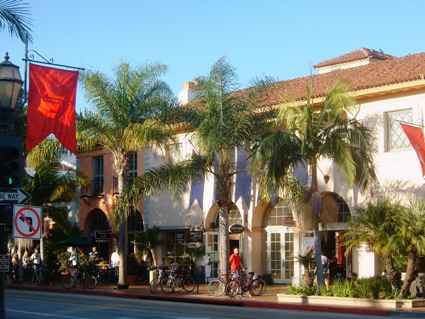 | Santa Barbara was
almost levelled in 1925 in the last major earthquake in the region. But this
has enabled it to be rebuilt with a common style which owes much to its
nearness to Mexico. It is a very attractive town, well laid out and with good
public transport. |
| With our concentration on the sights that we visit we often
forget to take just ordinary photos of our surroundings. The use of white
walls and the provision of plenty of trees all helps to produce a pleasing
environment. | 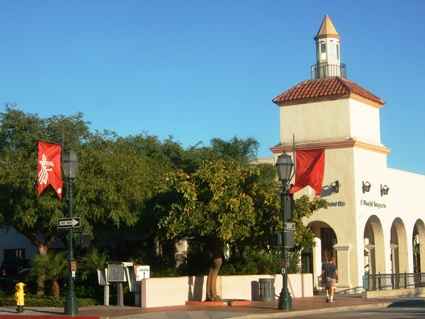 |
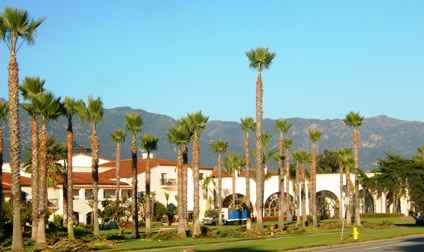 | At the end of the season, the trees need to be tidied up. These
have all received a short back and sides which goes to explain the look we
have seen on so many palms. |
| At the end of the main
street there is a wharf but the light was fading fast and it was time to move on. | 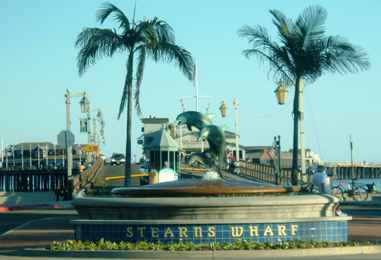 |
|